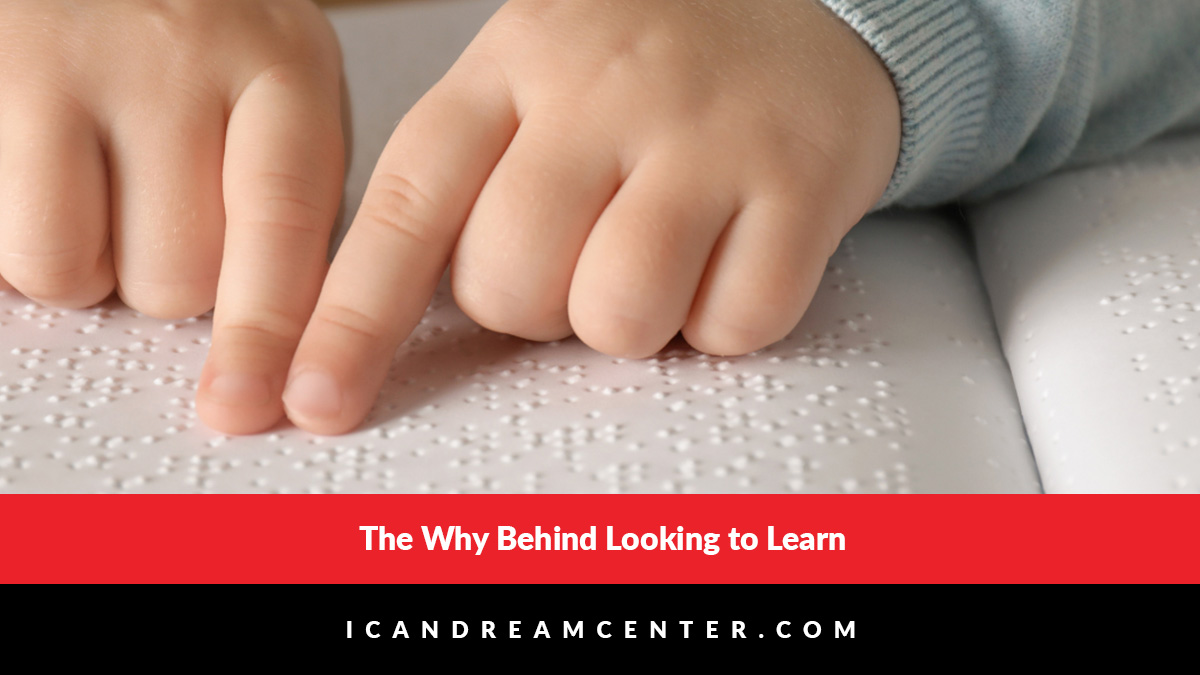
The Why Behind Looking to Learn
This month, we have covered autism awareness topics of interest for our blog audience. And as we look toward closing an important gap in services for our area’s youth by teaming up with House of Light, today is a great day to talk a little about the intersection of autism and vison impairment.
With Autism Awareness Month in full swing, it’s so great to be caught up in all the incredibly exciting encouragement that surrounds Autism Awareness/ Acceptance Month. Autism advocacy is in the air in so many spaces which is nothing short of incredibly heartening for us here at the iCan Dream Center. As a neurodiverse Gen Z student talked about on last week’s blog, shining a light on autism helps make “being neurodiverse” fine, acceptable, even something of a nonstarter out here—in the world. We do have to hand it to Gen Z! They just tend to get it really right when it comes to “different.”
If you know someone with autism, you already understand their lens on life might look a little different than yours. As you can imagine, dealing with vision impairment can add a challenging, though manageable situation for a person with a neurodiverse brain.
Autism and vision issues often go together, creating an even trickier landscape to navigate. Imagine already being sensitive to lights, sounds, and textures—then add difficulty seeing clearly. For someone with autism, this can intensify anxiety, make social interactions tougher, and even lead to feelings of loneliness. That’s why understanding this connection is so important; it helps us provide better support so individuals with autism and vision impairment can live happy, healthier lives!
If you’re a teacher, parent, or caregiver, there are some simple, friendly ways you can help someone with autism who also has vision impairment. You probably already know most of this if you love someone with VI.
Keeping environments predictable and structured can reduce anxiety because it minimizes unexpected surprises. Encouraging tactile, hands-on activities can bridge communication gaps, making concepts easier and more enjoyable to grasp. Clear verbal instructions and using auditory cues or sounds can also be incredibly helpful for better understanding and social interactions. Additionally, exploring sensory-friendly activities, such as sensory integration therapy, can make daily tasks more comfortable and manageable.
One big goal is to catch vision impairment early! Early intervention can make a huge difference. Early learning in this space boosts social skills, learning abilities, and independence. When families, educators, and healthcare providers come together to create a customized support plan, it truly changes lives for the better.
At iCan Dream, we build communities where everyone feels included, supported, and ready to thrive! And that is why iCan Dream Center and House of Light are teamed up and excited to create a belonging-rich, educational space for visually impaired learners vis-à-vis our brand new Looking to Learn Program at the iCan Dream Center! Join us here, at our Tinley Park campus for an Open House April 24th at 5:00 PM to meet our staff, mingle with families and stakeholders, and get involved!
